Bunya governance
Bunya peoples are reviving the triennial Bunya Festival—akin to a regional Aboriginal parliament—and all the traditions around it.
Bunya Mountains, southern Queensland: 250 kilometres north-west of Brisbane, Bunya Mountains—or Booburrgan Ngmmunge as this Country has always been known to Aboriginal people—hosts the world’s largest stand of bunya pines (Araucaria bidwillii) as well as natural grasslands, wet and dry rainforests, and many rare and threatened plants and animals. For Aboriginal people from near and far, it’s a sacred, nourishing place.
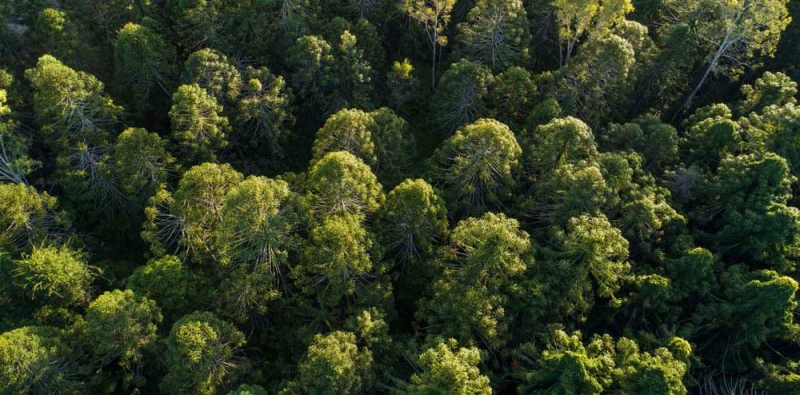
Bunya Mountain from the air
Every 3 years, the trees produce an abundance of giant nuts, which are so nutritious they are called in language ‘mother’s milk’. For the longest time, Aboriginal groups—including Wakka Wakka, Jarowair, Djaku-nde, Barrungam and many others from much further away—gathered in these mountains to feast, exchange, develop and enforce lore, settle disputes and renew their spirits. Since 2009 Bunya Peoples’ Aboriginal Corporation (BPAC) (first established as Bunya Mountains Elders Council) sustains the country and culture of Bunya Mountains.
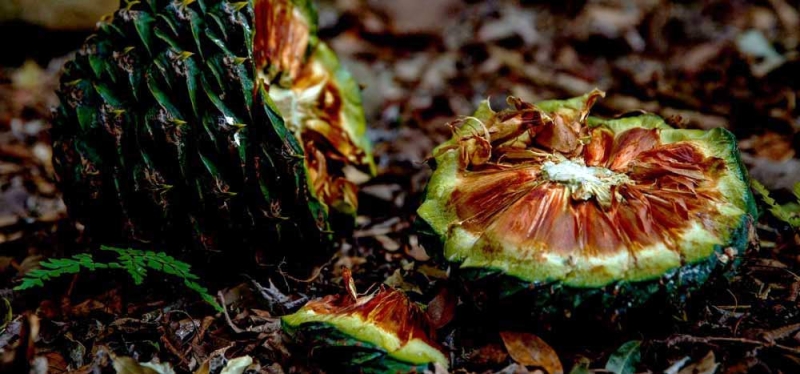
Bunya nut
The corporation works on 3 fronts—Country, culture and people—to:
- care for Country, working in partnerships to look after the unique cultural, spiritual and natural values of the Bunya Mountains
- ensure culture is protected, recognised, understood and respected
- invigorate relationships with stakeholders and give bunya people hope, encouragement and security, now and into the future.
Traditional custodians of the mountains have various governance responsibilities:
- establishing and maintaining lore/laws for occupation and use
- managing hunting, gathering, burning, camping, ceremony and movements
- owning and being responsible for individual bunya trees
Bunya Festival
Then every 3 years, there are additional obligations for hosting the Bunya Festival:
- preparing country—burning off to establish and maintain grassland balds, spiritual cleansing and healing
- inviting other Aboriginal groups
- welcoming guests and directing ceremony
The Bunya Festival is the largest and most significant gathering of Aboriginal people in Queensland—and possibly all of Australia. After each festival, to give Country time to recover and replenish, bunya peoples can visit and use resources of neighbouring areas. So as well as being a massive celebration, the festival sustains culture and affirms relationships and reciprocal rights and obligations.
For many years of our colonial history, traditional custodians were unable to hold the festival, barred from even speaking in language. In 1842, Governor Gipps actually decreed that the mountains be reserved for Aboriginal people. But by 1883, loggers had taken out most of the red cedars in the region, so they began to take bunyas. In 1908, Bunya Mountains was declared a national park but even so, logging continued until 1961.
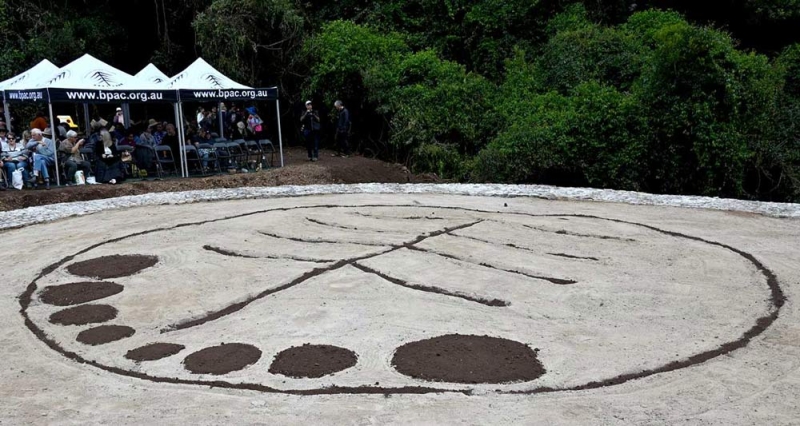
Sandy meeting ground with soil in a bunya tree design—the logo for Bunya People's Aboriginal Corporation
In 2010, bunya peoples from more than 20 traditional custodian groups held a series of forums and planning meetings, and as a result, released an important account of their aspirations. Bonye Bu’ru Booburrgan Ngmmunge includes a roadmap for revitalising country and culture, including the festival. It also speaks to the resilience of bunya peoples in sustaining governance arrangements despite devastating disruption:
Our exchanges remain somewhat of a guarded process given previous appropriation of resources and knowledge by non-Aboriginal groups. This story of the survival of the bunya forests ends with the reclaiming of Aboriginal custodial rights.
We, the Aboriginal people associated with Booburrgan Ngmmunge, have demonstrated remarkable leadership, integrity and resolve in establishing Aboriginal governance arrangements for Booburrgan Ngmmunge.
Three-way governance
It makes sense to think of the triennial festival as bunya governance, akin to parliament’s sitting weeks. Bunya peoples actually engage in 3 levels of governance in addition to their obligations as citizens of the Australian nation:
- governance for Bunya Mountains
- regional Aboriginal governance
- BPAC corporate governance
A turning point
Recently, Bunya Peoples—the corporation and the communities—celebrated two wins that will propel the corporation to a long-awaited moment—return to Country and strengthening of culture. In March 2022, Indigenous Land and Sea Corporation gave Bunya People a property on the mountain that can be repurposed as a permanent base for rangers so bunya people can reestablish connection to Country and cultural traditions, including fire practices. General manager Paul Dawson says it will remove the 3-hour round trip from Brisbane and boost the ranger program:
Being here at dawn and at dusk, not just during the day, will enable the rangers to gain a deeper understanding of country, how it grows and changes, what animals move through it and what needs to be done to protect it.
Half a million dollars from the Queensland department of tourism funded some critical—and beautiful—infrastructure for a bush university on the site: a sculptural meeting ground; a 'genestreams songline' artwork; and walking tracks and landscaping. The funding also covered uniforms and training for tour guides.
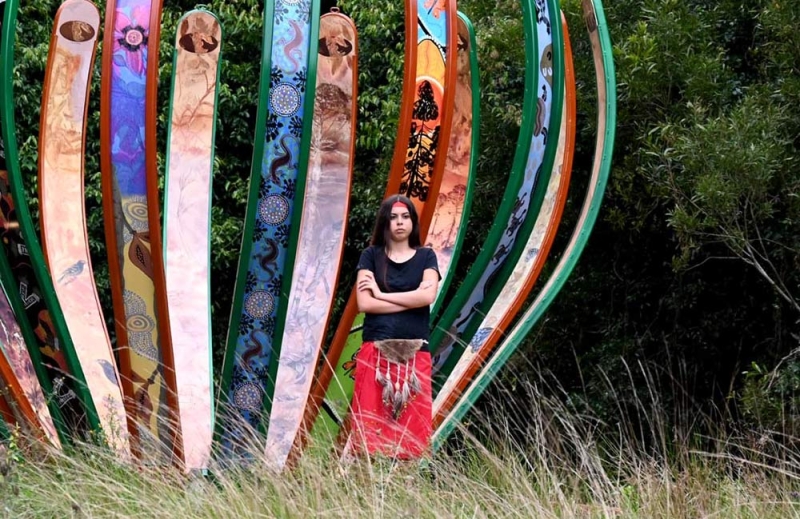
Bunya Genestreams Songline sculpture in the shape of a lotus lily. Five different artists made the 15 petals.
Then in April, Bonye Bush University launched. For Bunya People chair, Lurlene Henderson, it's a turning point:
For many years the traditional custodians of the region have sought recognition of the important cultural significance of the Bunya Mountains. Having a footprint on the mountains gives us recognition of this culturally sensitive space, and enables us to connect spiritually, and to heal.
Congratulations, bunya people, and thank you for your timeless governance.
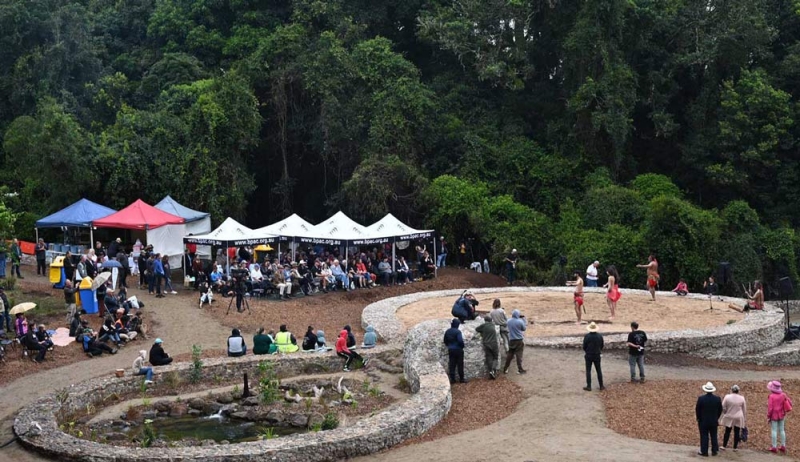
Launch of Bonye Bush University, showing the 120-metre long rock and concrete rainbow- serpent-meeting ground, with sections for women's business, men's business and a central performance space.